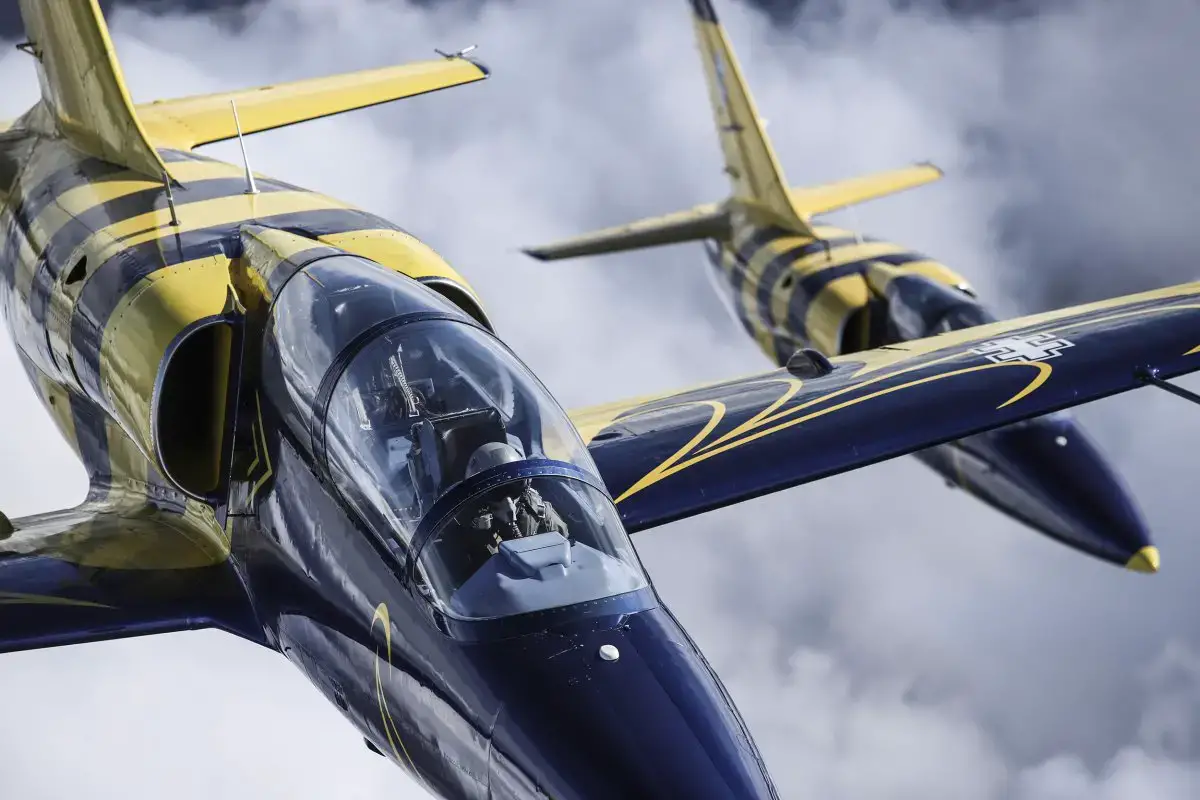
The Lithuanian Ministry of Defence has dispatched another shipment of military aid to Ukraine. The latest delivery includes a disassembled light attack aircraft, the L-39ZA “Albatros,” which was handed over to the Ukrainian army by the Lithuanian army on April 20. The L-39ZA “Albatros” aircraft, previously utilized by the Lithuanian army for training fighter control officers and conducting pilot combat training in challenging meteorological conditions day and night, will now bolster Ukraine’s defense capabilities. Responding to Ukraine’s appeals for assistance, Lithuania has been proactive in providing crucial support. Alongside the L-39ZA “Albatros,” this year’s aid package to Ukraine has comprised 155 mm ammunition, M577 armored personnel carriers, anti-drone systems, generators, winter equipment, tens of thousands of warm clothing sets, and thousands of rounds of Carl Gustaf anti-tank grenade launcher ammunition, as well as RISE-1 remote detonation systems.
The Aero L-39 Albatros is a high-performance jet trainer designed and produced in Czechoslovakia by Aero Vodochody. In addition to performing basic and advanced pilot training, it has also flown combat missions in a light-attack role. Unusually, the aircraft never received a NATO reporting name. The L-39 Albatros was designed during the 1960s as a successor to the Aero L-29 Delfín, an early jet-powered principal training aircraft. Performing its maiden flight on 4 November 1968, it became the first trainer aircraft in the world to be equipped with a turbofan powerplant. Quantity production of the L-39 Albatros proceeded in 1971; one year later, it was formally recognized by the majority of the Warsaw Pact countries as their preferred primary trainer. Accordingly, thousands of L39s would be produced for various military customers in Eastern Europe.

Additionally, it was exported to a range of countries across the world both as a trainer and a light attack aircraft. Since the 1990s, it has also become popular among civilian operators. By the end of the century, in excess of 2,800 L-39s had served with over 30 air forces. Several derivatives of the L-39 Albatros were developed.L-39ZA is significantly upgraded L-39ZO for armed training and light attack, employing sturdier landing gear, a higher payload (total 1,290 kg (2,844 lb)) and notably provision for a GSh-23L 23-millimeter twin-barreled cannon attached in a conformal pod under the pilots’ compartment, having a 150-round magazine within the airframe. Outer pylons wired to carry K-13 or R-60 air-to-air missiles. Two prototypes, with first flying on 29 September 1976. 208 aircraft delivered.
Lithuania is donating its sole remaining L-39ZA Albatross aircraft to Ukraine ‘on a non-reimbursable basis to advance its objectives and functions’, the government of the Baltic republic announced on 10 November 2021. The L-39ZA is a lead-in fighter trainer that doubles as a light attack aircraft. The Albatross destined for Ukraine is one of a pair that underwent an avionics and navigation equipment overhaul in Romania in 2007. Both aircraft were retired by 2018. The aircraft will be delivered ‘within a short while, as soon as practical details are settled with the Ukrainian side’, the Lithuanian government added in an official statement. Lithuania has offered aid to Ukraine since 2014 in its ongoing conflict against Russia. Ukraine already operates a fleet of L-39 Albatross aircraft.





